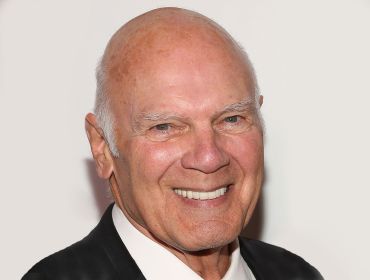Hybrid Is Here To Stay: New McKinsey Report Highlights Global CRE Trends
Top cities like New York and Tokyo will need to reimagine their downtowns to thrive by 2030
By Brian Pascus July 13, 2023 9:53 am
reprints
Adjust or perish. That seems to be the warning from McKinsey to the world’s largest cities.
A new study by McKinsey Global Institute concluded that hybrid work is permanent, suburbs are booming, demand for retail and office space in urban cores could fall by nearly 40 percent its 2019 levels within a few years, and in the future global cities must create multi-use buildings and mixed-use neighborhoods if they are to remain viable to employees.
The study, released today by McKinsey after more than a year of research, surveyed more than 12,000 employees and consumers in nine of the largest global cities: New York, San Francisco, Paris, London, Houston, Munich, Tokyo, Beijing and Shanghai. The goal was to understand the lived experience of hybrid work on a global scale, what this change in behavior means for the future of work, and how hybrid work will impact demand for commercial real estate in global urban centers.
Brian Vickery and Jan Mischke are two of the nine authors of the McKinsey report, titled “Empty Spaces and Hybrid Places: The Pandemic’s Lasting Impact on Real Estate.” In an interview with Commercial Observer, Vickery and Mischke emphasized that hybrid work is a permanent fixture of the global economy and will remain so for the foreseeable future.
“That 12,000-person survey gave us confidence that hybrid is here to stay,” said Vickery. “People are going three to five days [per week] on average, but they say they want to go in just a little bit less than that, and they say they think in the future their employers will demand they go in to the office just a little bit more than they do today.”
On average, office attendance among the nine major cities is down 30 percent compared to its pre-pandemic levels, according to the survey. It is unlikely to climb past the 2019 mark as even the most senior kind of global employees continue to embrace hybrid work models.
“A meaningful portion of the survey, call it 10 to 20 percent, said they’d look for a different job if their employer demanded that they come into the office more than they do today. The population that said that skewed higher income and [was] more executives and senior professionals,” explained Vickery. “So the people employers would least like to lose were telling us they’d leave their job if they were forced to work [from the office] more.”
With the move away from the traditional workplace came a concomitant growth in suburban living.
Between mid-2020 and mid-2022, between 5 percent and 7 percent of residents of these nine global urban cores left their cities for good, hastening a shift to the suburbs, according to the research.
“The urban cores where population growth was smallest in relation to their suburbs tended to be those with expensive homes, high office density, a higher share of workers in the knowledge economy, and limited retail presence,” the report said. “In general, U.S. urban cores were more affected than European and Japanese ones, which tend to have more mixed-use development, in which office, residential, and retail space exist alongside one another.”
The report’s authors said the suburban growth data was underscored by what respondents told them.
“There was this notion in 2020 or early 2021 where the idea was people left the city but they would come back. There’s a lot of evidence they won’t come back,” said Vickery. “Our survey populations said they’re not planning to move back to where they once were. They’re OK with longer commute times because they have to go in less often.”
The combination of lower office attendance, suburban migration and less retail traffic is expected to push down the demand for core commercial real estate assets in these large cities.
“We’re expecting quite a significant and sustained impact on demand,” said Mischke. “How it unfolds is very city and neighborhood specific. … Essentially, neighborhoods that have more knowledge-intensive firms, in terms of economic fabric, and have high housing prices, high office and commuter density, difficult commutes, are monocultural, those are areas that suffer both in terms of the immigration and in terms of the attendance drop.”
No asset class has been more affected by the out-migration to the suburbs and daily attendance drop than downtown office.
In the study’s three U.S. cities — New York, San Francisco, and Houston — between 2019 and 2022, office transaction volume fell by 57 percent, average sales price per square foot fell by 20 percent, and asking rents fell by nearly 22 percent, according to the McKinsey data. San Francisco transaction volume was a whopping 79 percent lower in 2022 than in 2019.
In the most severe forecast, the report predicted that by 2030 global office demand would be nearly 40 percent lower than its 2019 levels, with an estimated $800 billion in office value at stake.
The data models also predict that demand for multifamily residences in the nine global urban areas will be 10 percent lower by 2030 than its 2019 levels, while retail space demand is expected to fall 9 percent in that same time frame.
If there’s any saving grace out of this CRE doom spiral, it will be through innovation and reinvention.
The report emphasized the need for cities to prioritize mixed-use development — and even mixed-use neighborhoods that incorporate buildings that feature office, residential and retail space — and to construct future office spaces that are adaptable and flexible for the present future of hybrid work.
“Employers are now able to say they want less square meters, but it [also] needs to be amenable to people coming in and out on different days, with no fixed desks,” explained Mischke. “We’re going to see more mixed-use developments and obsolete office buildings being redeveloped into what the market is now demanding.”
More than anything, the authors insisted that the CRE world of only a few years ago has long since vanished.
“In the old world you had 10- to 15-year leases. … Employers are now saying, ‘I don’t know what I need in 10 years, but I don’t even know what I need in three years,’ ” said Vickery. “And so it’s a more challenging equation to understand [in terms of] the amount of space that you need and the types of space that you want to have.”
Brian Pascus can be reached at bpascus@commercialobserver.com


